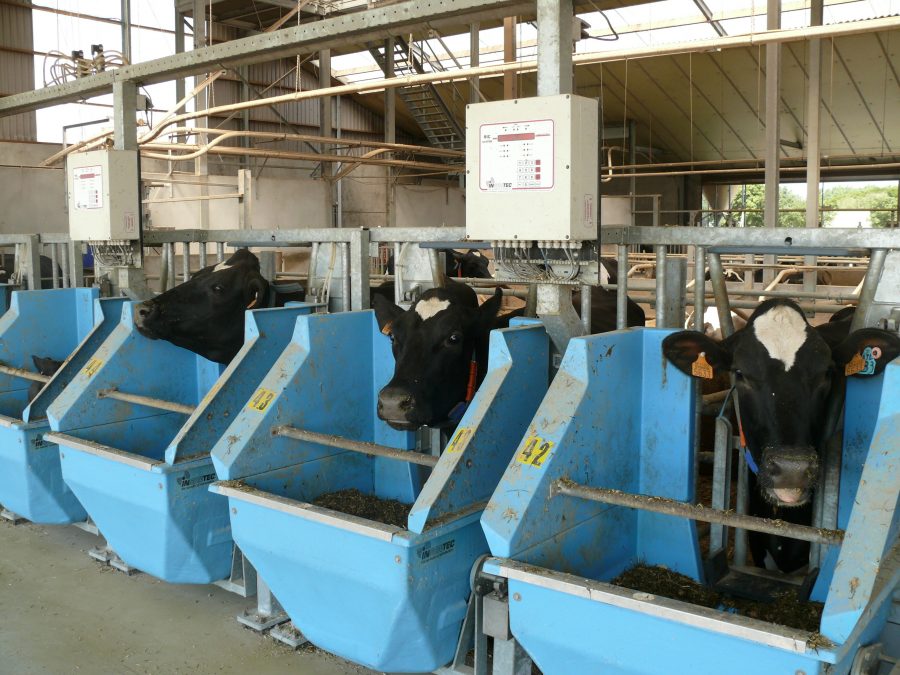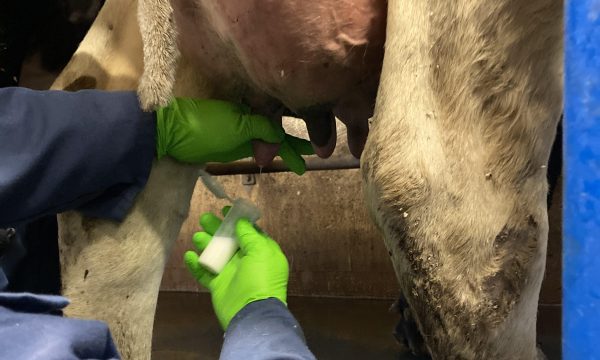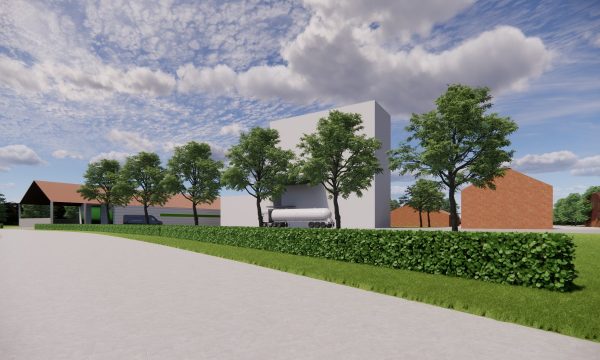Project news Feed strategies in the battle against climate change

Of the global greenhouse gas emissions from livestock production, 65% come from cattle farming. Methane, which is mainly formed during rumen fermentation, is the most important greenhouse gas. A lot of greenhouse gases are also formed during the production of feed for dairy cattle. In this doctoral study, Dorien Van Wesemael looked for strategies to reduce greenhouse gas emissions in dairy farming.
Reducing methane emissions
The fight against climate change is gradually gaining momentum. The Flemish Climate Policy Plan 2021-2030 sets the goal of reducing greenhouse gas emissions in agriculture by 26% by 2030 compared to the reference year 2005. In the Covenant on Enteric Emissions from Cattle 2021-2030 this is translated into a 19% reduction of enteric methane emissions from cattle. The methane released in the rumen during feed fermentation also represents an energy loss for the cow. In this way, reducing methane emissions can also have a positive effect on milk production. Potential feeding strategies to reduce emissions are feed additives, fats in the feed, increasing the starch content or decreasing the fiber content. Although many strategies with an impact on methane emissions are already known, they often have variable results, so the application of these strategies in practice is still very limited. Also, the carbon footprint of feed production needs to be taken into account to assess the net effect.
Feed additives
Feed additives can intervene at various steps in the process of forming methane in the rumen. They can influence the bacteria that produce methane, prevent or capture the production of the building blocks of methane, and the like. They are added to the ration only in small amounts, but their effect may be only temporary. The bacteria in the rumen can adapt to the new conditions, so the effect on methane emissions eventually disappears.
In her PhD, Van Wesemael investigated the effect of the feed additive 3-NOP (3-nitrooxypropanol). Administering 1.6 g of 3-NOP per cow per day proved sufficient to reduce methane emissions by more than 20%. Milk production was not affected by the additive. Mixing the additive into roughage or adding it to concentrate pellets had almost the same effect. The production of the additive is associated with the emission of additional greenhouse gases, but these amount to less than 1% of a cow's emissions. The net effect thus remains positive.
Fat content
Increasing the fat content of the ration is also a promising strategy for reducing methane emissions. A ration with more fat contains less fermentable organic matter, and the fat may also lower the digestibility of the fiber in the ration. Both of these effects reduce the production of methane in the rumen. Fat is also toxic to several types of microorganisms that produce methane in the rumen. A higher fat content of the ration increases the energy density of the ration. This will usually increase the productivity of the animals which will also increase the efficiency. This results in lower emissions per kilogram of milk. Above 60 - 70 grams of fat per kg DS, the absorption of the ration decreases. This is obviously not a desirable effect and must be avoided.
In her research, Van Wesemael replaced imported soybean meal in the milk ration with beer draff and rapeseed meal. Both are by-products and are produced locally. As a result, the carbon footprint of the feed is lower. In addition, beer draff is rich in fat, potentially lowering methane production. Replacing soybean meal with rapeseed meal or a combination of rapeseed meal and beer draff reduced absolute methane emissions by 8%. In addition, this replacement reduced the carbon footprint of feed production by 30 %. The combination of rapeseed meal and beer draff to replace soybean meal also resulted in an increase in milk production. Soybean meal partially replaced by beer draff alone only yielded gains in the carbon footprint of feed production (-10%), but not in methane emissions from the cow. Further research is needed to better understand and quantify the observed effects on methane emissions.

Starch content
Methane is formed by reaction of H2 and CO2 in the rumen. Certain carbohydrates, sugar and crude fiber (CF), stimulate the formation of methane, whereas starch only counteracts the formation of methane (Figure 1). Thus, less methane will be formed from a ration with more starch, compared to a ration with more fiber. This strategy can be realized by using grain-based rations instead of roughage-based rations or by replacing grass roughage with high-starch roughage, such as maize.
From her research, Van Wesemael concludes that replacing grass silage with maize silage has little effect on methane emissions. After all, if the rations are balanced for energy (VEM) and resistant protein (DVE) and with sufficient supply of glucogenic energy (starch), the rations should be corrected in such a way that the final balance is about the same. The same applies to adding beet pulp to the ration when the pulp is used to replace roughage. If the pulp replaces concentrates, this can have a positive effect on the carbon footprint of feed production.
Conclusion
Van Wesemael's PhD shows that different feeding strategies can contribute to the reduction of greenhouse gas emissions from dairy farming. Investments in reducing rumen methane production is an important strategy to begin with. For this purpose, different feeding strategies can be applied either separately or in combination. In addition, this doctoral study illustrates the large contribution of feed production to the total carbon footprint of dairy farming. Choosing local roughages, by-products and concentrates to replace imported products such as soybean meal can make a significant difference. Reducing cattle methane emissions and the carbon footprint of feed can result in significant climate gains.


